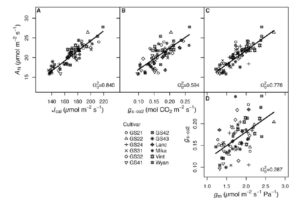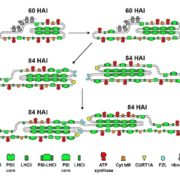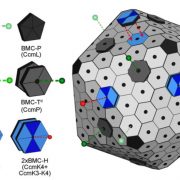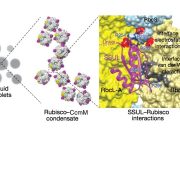Variable mesophyll conductance among soybean cultivars sets a tradeoff between photosynthesis and water-use-efficiency
 Boosting photosynthetic efficiency in crop species has long been a goal since efficiency of photosynthesis is a critical factor in crop yield. One strategy for improving photosynthetic rates is enhancing mesophyll conductance to carbon dioxide. Tomeo and Rosenthal examined 12 cultivars of soybean (Glycine max) under both field and control conditions to examine differences in 20 different leaf structure and function traits. Under controlled conditions, cultivar variation did not have an impact on structural traits, but there were significant variations in a few physiological traits including electron transport rate, net assimilation rate, and mesophyll conductance. Mesophyll conductance had a strong positive correlation with photosynthetic yield, as well as, stomatal conductance and leaf mass per area. Using leaf mass per area as a selection factor has the potential for breeding soybean with greater photosynthetic efficiency; however, as stomatal conductance is also correlated with this trait there will be trade-off with water use efficiency that must be managed. Plant Physiol. 10.1104/pp.16.01940 (Contributed by Jen) (OA)
Boosting photosynthetic efficiency in crop species has long been a goal since efficiency of photosynthesis is a critical factor in crop yield. One strategy for improving photosynthetic rates is enhancing mesophyll conductance to carbon dioxide. Tomeo and Rosenthal examined 12 cultivars of soybean (Glycine max) under both field and control conditions to examine differences in 20 different leaf structure and function traits. Under controlled conditions, cultivar variation did not have an impact on structural traits, but there were significant variations in a few physiological traits including electron transport rate, net assimilation rate, and mesophyll conductance. Mesophyll conductance had a strong positive correlation with photosynthetic yield, as well as, stomatal conductance and leaf mass per area. Using leaf mass per area as a selection factor has the potential for breeding soybean with greater photosynthetic efficiency; however, as stomatal conductance is also correlated with this trait there will be trade-off with water use efficiency that must be managed. Plant Physiol. 10.1104/pp.16.01940 (Contributed by Jen) (OA)










Leave a Reply
Want to join the discussion?Feel free to contribute!